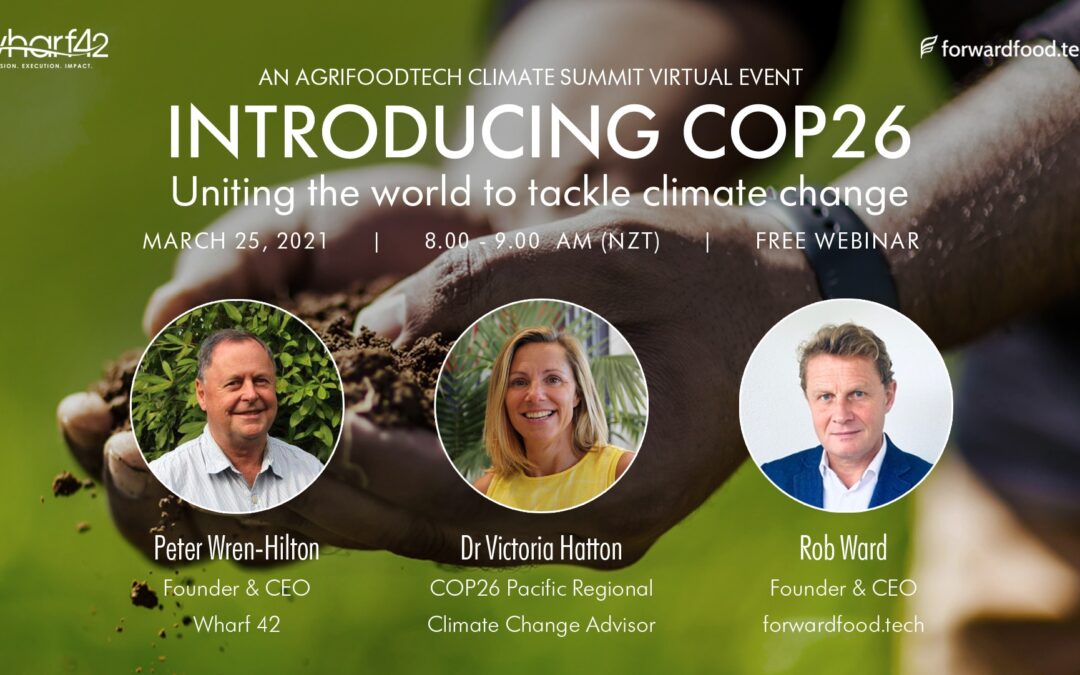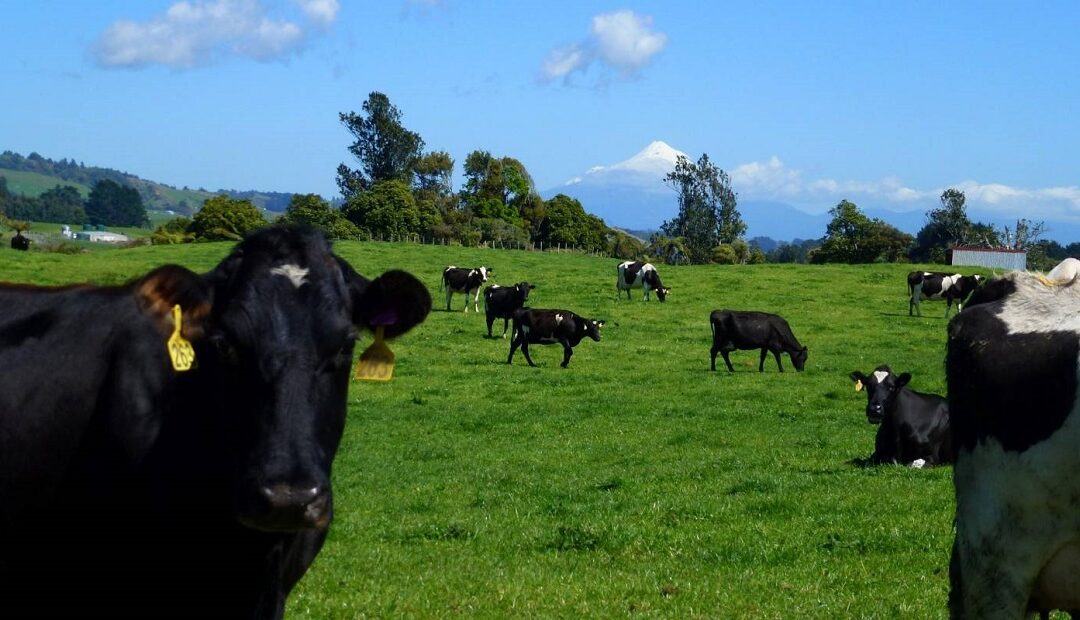On Sunday, the New Zealand Climate Change Commission released their Draft Advice for Consultation.
First impressions are this is a well-researched piece of work with much to commend it. Whilst the Executive Summary headlines might appear to be daunting, I believe that much of what is recommended can be achieved within the time-frames proposed.
My focus, not unnaturally, is on the potential impact of the Draft Advice on New Zealand’s agricultural sector. To make some sense of this, I’ve extracted and reproduced below content from the Draft Advice (the original document contains 188 pages) that contains some of the background context provided and the recommendations made, that impact on the agricultural sector.
Other parts of the Draft Advice consider transport, energy, waste, buildings, infrastructure and other elements that all contribute to the impact of human created greenhouse gas emissions on our climate.
Over the coming weeks, I’ll be commenting on different aspects of the Draft Advice with specific emphasis on how agri-technology will assist farmers and growers meet the recommended deliverables. The Climate Change Commission is seeking feedback on this Draft Advice before providing its final advice to the Government and public by 31 May 2021. Wharf42 will be submitting its observations through March to meet the Commission’s submission deadline.
The Climate Change Commission Draft Advice for Consultation Agricultural Summary
Pages 12-13 of the Draft Advice Document
- Agriculture has a large role to play in reducing emissions, and farming needs to become even more efficient. There have been improvements in the last few decades, but more can happen.
- Aotearoa has been an agricultural world leader over recent decades. We must adapt and improve our use of our land to keep this status. This means developing, adopting and using practices and technologies that lower emissions and address climate change.
- Forests have a role to play, but we can’t plant our way out of climate change.
What are we recommending?
- The Government needs a cohesive strategy that includes water, biodiversity and climate. There are multiple benefits to taking a holistic view of how we use and protect our land.
- There are changes farmers can make now to reduce emissions on their farms while maintaining, or even improving, productivity. This includes reducing animal numbers and better animal, pasture and feed management. Policy support is needed to make this happen.
- Our advice advocates for a long-term plan for targeted research and development of new technologies to reduce emissions from agriculture.
- Pine trees will still play an important role in getting to 2050 and could support a future bioeconomy, as bioenergy to replace fossil fuels and as timber for building.
- Existing forests, small blocks of trees, soils and wetlands can all store more carbon. Work is needed to better understand this potential and how to include this in accounting systems.
- Native forests can create a long-term carbon sink while providing a range of other benefits, like improving biodiversity and erosion control. Incentives are needed to get more native trees planted.
Agriculture
- What is the sector’s current emissions profile?
In 2018, agriculture emissions made up about 90% of biogenic methane and 18% of long-lived gas emissions. This is 1.2 Mt CH4 and 8.3 Mt CO2-e, respectively.
- Where does this come from?
Long-lived gases from agriculture are largely nitrous oxide, coming from animal urine and synthetic fertiliser use. Smaller amounts of carbon dioxide are emitted through other types of fertiliser.
Biogenic methane emissions from agriculture are primarily from deer, sheep, beef and dairy cow burps.
- What does our path show for this sector?
By 2035, our path shows that biogenic methane emissions from agriculture reduce to 0.97 Mt CH4, and long-lived gases reach 6.9 Mt CO2-e. This puts us on track to meeting our 2050 target.
Agriculture
Pages 65-66 of the Draft Advice Document
The two main agricultural greenhouse gases are biogenic methane and nitrous oxide. Biogenic methane has a different target to other gases, while nitrous oxide is included in the long-lived greenhouse gas target. The agriculture sector has focused in recent years on making productivity improvements that have also decreased their emissions intensity. The sector is addressing water quality issues through actions that can also reduce emissions. These efforts need to increase to reach the 2030 and 2050 emissions targets.
There are changes that farmers can make now to reduce emissions on their farms, if given sufficient support. These can improve animal performance while reducing stock numbers, reducing the number of breeding animals required, and moving to lower input farm systems. The Biological Emissions Reference Group found that, when successfully implemented, these changes could be made while not significantly reducing production and while maintaining or even improving profitability.
In setting our path and emissions budget levels, we have conservatively assumed that no new technologies to reduce methane emissions from agriculture are available before 2035. As a result, our path involves changes in farming practices that start pushing towards the limit of what we are confident can be delivered.
Overall, our path would see dairy and sheep and beef animal numbers each reduced by around 15% from 2018 levels by 2030. This compares with an 8-10% reduction projected under current policies. In this, we have included transforming a small amount of dairy land into horticulture, at a rate of 2,000 hectares per year from 2025 (Figure 3.17). With these changes, the 2030 biogenic methane target could be met without relying on new technologies. If farmers can continue to achieve productivity improvements in line with historic trends, these outcomes could be achieved while maintaining total production at a similar level to today (Figure 3.16).
Selective breeding for lower emissions sheep is a proven option which is in the early stages of commercial deployment. Our path assumes that this can be progressively adopted, reducing total biogenic methane emissions from sheep and beef farming by 1.5% by 2030 and 3% by 2035. No adoption has been assumed for the first budget period. Breeding for low emissions cattle is a future possibility but the research is in an earlier stage. We have not assumed any contribution from this by 2035.
Methane inhibitors and vaccines are being researched. These could reduce the amount of methane that is released from cattle and sheep. While there has been progress on inhibitors, these are not yet commercially available. There is uncertainty around when inhibitors will be available, what their costs could be and how effectively they could reduce emissions. Therefore, as mentioned, our path has been set so that the budgets can be achieved without the use of either methane inhibitors or vaccines.
However, if any of these technologies could be brought to market before 2035, they would provide additional options for meeting the emissions budgets. We will be reviewing progress on the developing these technologies and will consider changes to the emissions budgets if we believe they can be widely adopted in the future.
Food and fibre production
Pages 88-89 of the Draft Advice Document
As part of the climate transition, the food and fibre sector will need to reduce on-farm biogenic methane and nitrous oxide emissions, and carbon dioxide emissions from transport and processing plants. Farmer innovation and competing in markets against subsidised producers means that the country’s pasture-based agriculture has one of the lowest emissions footprints in the world.
However, Aotearoa may lose market access as global markets increasingly seek lower emissions products such as low emissions alternative and synthetic proteins. There is good reason to believe that production in Aotearoa will be competitive in a low emissions future where meat and dairy products are still consumed.
Farmers are already taking action to improve water quality. Many of these actions also reduce greenhouse gas emissions. This has also been identified and prioritised by government.
Meeting our proposed emissions budgets through to 2035 could result in little change to the level of agricultural production as there are practices changes that can be made on-farm to reduce emissions without reducing production. However, the output of milk solids would increase slightly and meat output reduce slightly compared to what would happen under current policy settings (Figure 5.3). The impacts on production beyond 2035 would depend on the availability of new technologies such as a methane inhibitor or vaccine.
How can this be managed?
Farm businesses will need to adopt practice changes and take up new technology as it becomes available. Action could result in improved international market access. However, it may be challenging for the food and fibre sector to pass on any costs. Our path suggests that making these changes to reduce emissions on-farm will have little impact on how much food and fibre is produced in Aotearoa.
Approximately 20,000 to 30,000 farm businesses in Aotearoa will need to reduce their biogenic methane and nitrous oxide emissions by making on-farm practice changes. Many farmers are already making these changes but will need to push these changes further. Making these changes will require skilled farm management and high-quality data. Advisory services will need to work closely with farm managers to achieve this.
New technologies such as a methane inhibitor or vaccine would help to significantly reduce emissions from the sector without reducing production. These technologies are not yet available, and so research and development to help bring these technologies forward, and systems for deploying such technologies when they become available will benefit the sector and the economy (see chapter 6, time-critical necessary action 4).
Agriculture
Pages 118-120 of the Draft Advice Document
Reduce biogenic agricultural emissions through on-farm efficiency and technologies
Changing on-farm management practices can reduce biological agricultural emissions, and will be enough to achieve the 2030 biogenic methane target. Changes include adjusting stocking rates, supplementary feed and nitrogen inputs for emissions efficiency, as well as breeding low emissions sheep into the national flock and using low nitrogen feeds. Many of these changes will be driven by freshwater policy, so farmers may already be taking actions to reduce their emissions. Policies need to be cohesive across environmental issues to ensure they achieve multiple outcomes.
Achieving emissions reductions of the scale required will rely on highly skilled farm management and high-quality data to support decision making. The Biological Emissions Reference Group found these emissions reductions could be achieved without reducing profitability. Increasing technology use on farms will help to support efficiencies and reduce environmental impacts. Improved rural connectivity via broadband will make it easier to access the information and data farmers need to measure and monitor emissions and will support precision agriculture approaches.
In addition to improving efficiency on farms now, the successful development of new technologies and practices would provide greater flexibility and allow Aotearoa to meet the more ambitious end of the 2050 biogenic methane target range without reducing agricultural production. Promising options currently being researched and developed include a methane inhibitor that would be compatible with the pastoral farming system and a methane vaccine. Government investment into research and development to reduce biological emission from agriculture is secured out to 2025, but there is no long-term plan beyond then.
The country’s food safety system serves an important purpose and ensures products are safe and trusted internationally. However, it can take some time to get new mitigation technologies through the system, or even identify whether they need to go through the system. Streamlining the system would ensure that any effective new technologies and practices to reduce agricultural emissions can be implemented in a timely manner.
As noted by the ICCC, pricing biological emissions from agriculture would help to incentivise on-farm efficiency improvements and technology uptake. Government is working with industry through the He Waka Eke Noa Partnership to develop a farm level pricing system. The partnership is also developing the information and support needed to manage farms in a low emissions way, including training, extension, and farm and forestry advisory services. It will be important that these tools can deliver emissions reductions consistent with emission budgets and targets, and that they endure beyond 2025. The Commission will review He Waka Eke Noa’s progress in 2022.
Many other potential ways of reducing emissions from the food and fibre system have also been proposed. For example, there has been discussion about the use of genetic engineering, and practices to increase carbon sequestration and resilience (often under the banner of regenerative agriculture). Evidence of effectiveness within an Aotearoa context, and discussions about the acceptability of different approaches, is needed.
Time-critical necessary actions to reduce biogenic agricultural emissions through on-farm efficiency and technologies
Currently available changes to management practices have the potential to meet the 2030 biogenic methane target. New technologies would provide greater flexibility and the ability to meet the more ambitious end of the 2050 biogenic methane target range without reducing output. We recommend that in the first budget period that the Government:
- Ensure that effective mechanisms are in place so that the plans, advisory and guidance tools developed by He Waka Eke Noa will endure beyond 2025 and can support achievement of the emissions budgets and targets.
- Drawing on the work of He Waka Eke Noa, decide in 2022 on a pricing mechanism for agricultural emissions as is required by legislation that is suited to the characteristics of the sector and capable of supporting achievement of the emissions budgets and targets.
- Ensure the Rural Broadband Initiative is resourced and prioritised to achieve its 2023 target, so that farmers have access to data and information to support decision making and the ability to practice precision agriculture.
- Review current arrangements and develop a long-term plan for targeted research and development of technologies (including evaluating the role of emerging technologies such as genetic engineering) and practices to reduce biogenic emissions from agriculture.
- Review and update processes and regulatory regimes to ensure that new emissions reducing technologies and practices can be rapidly deployed as and when they are developed.
|
Progress indicators
|
- Government to have, by 31 December 2022, developed a long-term plan for funding research and development to support reductions in biological emissions from agriculture.
- Government to have, by 31 December 2022, reviewed and amended processes and regulatory regimes for new emissions reducing technologies and practices.
|
Create options for alternative farming systems and practices
Pages 136-143 of the Draft Advice Document
Diversifying land uses and switching some land that is currently in livestock agriculture to uses like horticulture or arable cropping could reduce emissions. Transforming to alternative farming systems is unlikely to play a large role in the first few emissions budgets as the land area converted is likely to be a small percentage of that currently in pastoral farming. However, work done in the next few years can unlock future options that could play a key role in future emissions budgets.
There are currently some significant barriers to changing land use – such as market access, supply chains, and lack of experience, skills, support and infrastructure. Investment in new farming systems is higher risk if infrastructure like packhouses, transport and water storage do not already exist – and vice versa.
Different land uses have opportunities, risks and implications that have not yet been fully explored and understood in the context of the low emissions transition. Land is an important resource with the potential to support many important outcomes across environmental, social, cultural and economic domains. Better data, information and tools would help decision makers at all levels – including landowners, local and central government – to make decisions across a range of outcomes.
Water storage implications of different farming systems need to be considered in the context of broader water quantity and quality issues within Aotearoa. Implications for adaptation to climate change, and the implications for iwi/Māori (relating to use, ownership, access and cultural impacts) and broader Māori rights and interests as a Treaty Partner are also critical. Reform of resource management legislation, for example via a Strategic Planning Act, provides an opportunity to take a more holistic approach.
Verification of the emissions footprint and broader sustainability of products can help to support market access. Focusing the Government’s international market access work on the country’s sustainable, low emissions food and fibre products could help overcome market access barriers and encourage landowners to move to lower emissions land uses.
Necessary actions to create options for alternative farming systems and practices
|
|
We recommend that, in the first budget period the Government support alternative farming systems to reduce emissions by:
- Accelerating investment in high resolution, consistent, publicly available nationwide land and climate information, and decision-making tools and processes, to better inform local and national land use decisions.
- Supporting deployment of the systems and infrastructure needed for alternative farming systems and products.
- Prioritising initiatives to reduce barriers and enable international market access for proven low emissions food and fibre products.
|
| |
New Zealand’s potential contribution to global efforts to limit biogenic methane emissions, reflecting its national circumstances and local and global economic, social, and demographic trends
Pages 178-180 of the Draft Advice Document
Our scenario analysis indicates that it is possible to reduce total biogenic methane emissions by between 12-26% below 2017 levels by 2030 and 25-59% below 2017 levels by 2050 through reducing biogenic methane emissions from both agricultural and waste.
The lower ends of these reductions (12% by 2030 and 25% by 2050) can be achieved using currently available practices and technologies. The development of new technologies such as a methane inhibitor would provide greater flexibility and unlock the upper of range reductions.
Reaching the higher range of biogenic methane reductions (26% by 2030 and 59% by 2050) without new technology would likely require reduced agricultural production from livestock and land use change. For more details on our scenarios and projected emissions reduction pathways see Chapter 3: The path to 2035.
On balance, we consider that national circumstances do not provide sufficient reason for Aotearoa to reduce its biogenic methane emissions by less than other developed countries in contributing to the global 1.5°C goal.
The country’s relatively efficient food production and a growing global population suggests Aotearoa might be expected to take a smaller than average reduction in biogenic methane. However other factors, such as increasing awareness of the environmental impact of animal based products and local environmental challenges, would suggest that Aotearoa could make a greater than average reduction in biogenic methane. Overall we assess that there are good reasons for Aotearoa to expect to reduce biogenic methane emissions by at least the global average as part of contributing to the global 1.5°C goal.
Where does this get us?
Our assessment of the IPCC scenarios has identified the range of global reductions in biogenic methane that are compatible with limiting warming to 1.5°C. These are represented by the interquartile range of modelled pathways. The pathways in the top half of this range are the ones with greater reductions in methane and less reliance on unproven carbon removal methods. They have also been estimated to be the most likely to deliver the best overall social, economic and environmental outcomes.
Fundamentally, it is our judgement that there is no reason to anticipate that Aotearoa would be expected to contribute less that then middle of the IPCC range for reductions of biogenic methane.
Biogenic Methane Recommendation
Reductions in biogenic methane that might be required of Aotearoa in the future as part of a global effort to limit warming to 1.5ᵒC
|
| We advise that the reductions in emissions of biogenic methane that Aotearoa may eventually need to make as part of a global effort to limit temperature increase to 1.5ᵒC could be between 49% and 60% below 2017 levels by 2100. |
Our analysis suggests that the successful development of a methane vaccine or inhibitor suitable for pastoral systems would help reduce the country’s methane emissions by more than 50%.
There is a role for agricultural products from Aotearoa in a low emissions future, both for the nutrition it can provide and the valuable natural products such as wool. However, to create and maintain the market for those products, Aotearoa needs to be able to demonstrate their genuine climate, environmental, social and cultural credentials.
Summary from Wharf42
The full Climate Change Commission Draft Advice for Consultation runs to 188 pages. This summary only covers the key passages relating to Agriculture. I have not included the many references to Forestry which clearly play a major part in the whole story.
Over the coming weeks, we will post more detailed comment on some aspects of the Draft Advice. We believe that if industry, government and research can work together, then the high level targets identified in this document can be met. Over the coming weeks, we’ll explain how.
If you want to learn more about the ongoing development of the Wharf42 Insights Programme and other initiatives currently being kept under wraps, please sign up for our free Monthly Newsletter.





